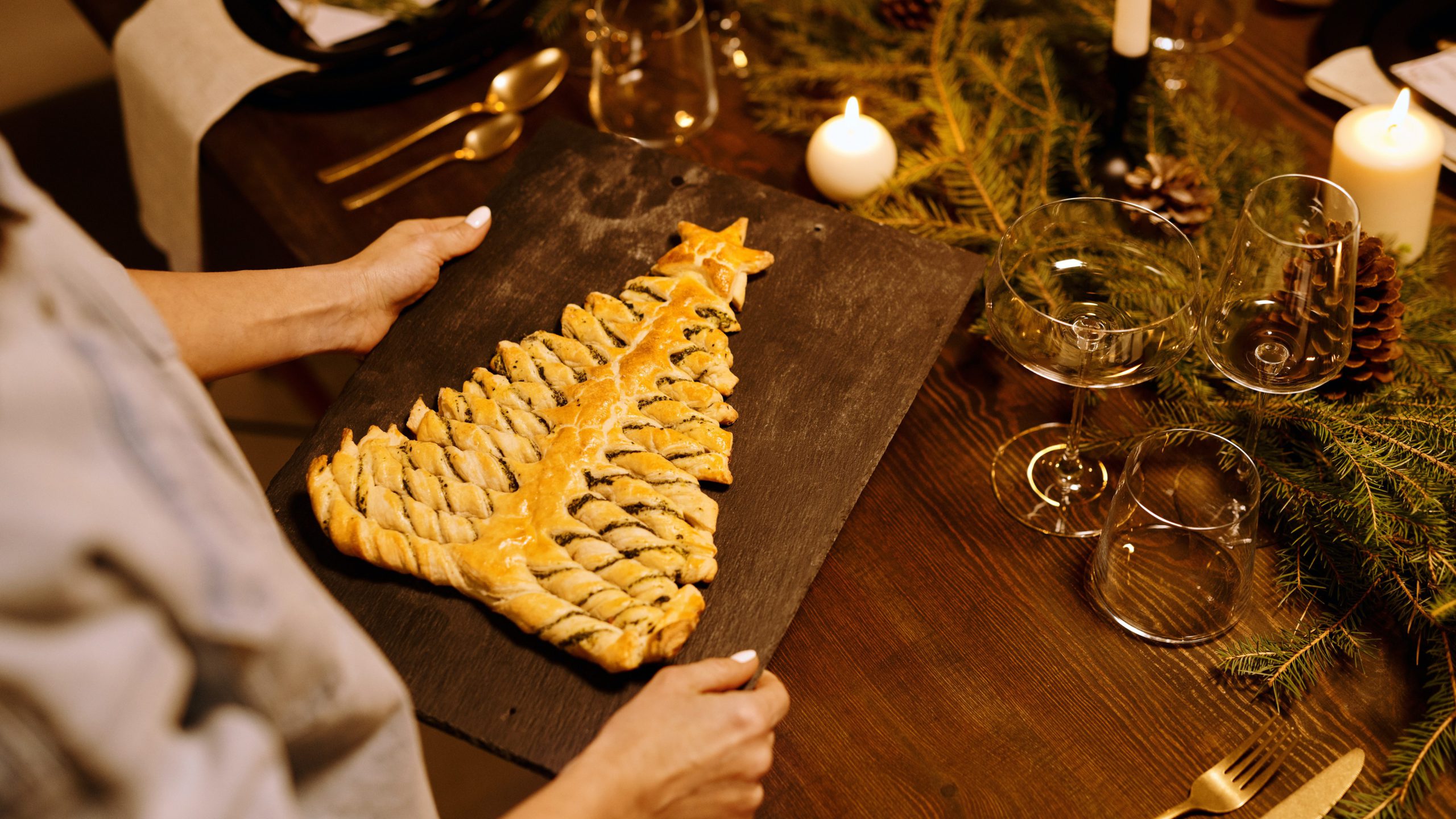Know your tasty pastries
Pies! Quiches! Puffs! Pastries galore! Have you ever wondered what makes one pastry flaky and another crumbly? Why are some baked goods more dense or airy or buttery?
Put on your apron and dust your hands with some flour, pastry class is in session!
Puff pastry
Known for its light and flaky texture, puff pastry is quite versatile and can be used for both sweet and savoury recipes. When baked, as the name suggests, this pastry puffs up and will usually brown on its top layer, but when broken will reveal layers of tender pastry underneath.
With butter an important component, the pastry gets its layers from the multiple times it is rolled and folded onto itself when in dough form. Puff pastry is generally easy to handle and shape; but if you’re using it to cover a baked dish, do remember to poke some holes into the pastry with a fork or tip of your knife to let air escape when it puffs and expands.

Use puff pastry when making meat pies or any other savoury dish with a pastry top, or shape them into mini cups and bake them blind to make a base for fillings that you can then serve as hors-d’oeuvres.
Shortcrust

As opposed to topping a baked item (the way you might see puff pastry atop a chicken pie), shortcrust is almost always used as a base.
Shortcrust can be made with just fat (such as butter), flour, salt and water, with the ratio of flour to fat at least double, though pastry chefs may vary in exact measurements.
As shortcrust is thicker, it will hold up your fillings without letting liquids seep through to the bottom of your baking tin. However, as it is a weightier pastry, it isn’t so easy to shape and manipulate once you’ve rolled the dough out flat.
This is the crust you use for a tart or pie base such as for apple or other fruit pies, as well as for quiches.
Flaky crust
This might get a little confusing: flaky pastry and puff pastry aren’t actually the same thing! While their recipes are similar and their qualities and usages are mostly interchangeable, the distinction lies in the intention put into the rolling portion when prepping the dough.
Also known as ‘quick pastry’, flaky pastry is made with the same ingredients of puff pastry, but with much less rolling and folding, making it therefore quicker to make. Unlike puff pastry where the layers are quite uniform, when making flaky pastry, chunks of shortening keep the particles of dough separate from each other, which causes the layers to flake when baking.
Save your flaky crust dough for baked items like triangle puffs or curry puffs, apple turnovers and sausage rolls.

Filo pastry
The fact that this pastry is still also spelt ‘phyllo’, is in itself a clue to its Greek-Turkish origins.
Made with flour, water and a little bit of oil, this pastry requires true skill to make, as it is rolled and stretched very thin. Pastries need to be baked with multiple thin layers stacked on each other in order for them to hold themselves up against a filling.

Still ever-present in Greek, Turkish and Middle Eastern cuisine, this is the pastry used in baklava and other traditional sweet pastries usually containing some form of nuts and/or cheese. These baked sweets are also often drizzled with honey or sweet syrups after baking.
